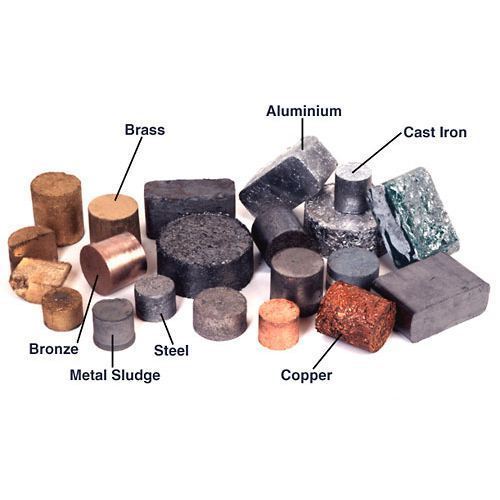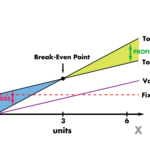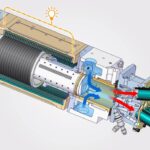Non-ferrous metals and alloys – We have already discussed that the non-ferrous metals are those which contain a metal other than iron as their chief constituent. The various non-ferrous metals used in engineering practice are aluminum, copper, lead, tin, zinc, nickel etc. and their alloys. These non-ferrous metals and their alloys are discussed, in brief, as follows:

1. Aluminum and its alloys: The chief source of aluminum is a clayey mineral called bauxite which is a hydrated aluminum oxide. It is extensively used in air craft and automobile components where saving of weight is an advantage. The main aluminum alloys are as follows:
(a) Duralumin. The composition of this alloy is as follows:
Copper = 3.5 — 4.5% ; Manganese = 0.40 — 0.70% ; Magnesium = 0.40 — 0.70% ; and the remaining is aluminum.
This alloy possesses maximum strength (about 400 MPa) after heat treatment and age hardening. After working, if the metal is allowed to age for 3 or 4 days, it will be hardened. This phenomenon is known as age hardening.
(b) Y-alloy. It is also called copper-aluminum alloy. The composition of this alloy is as follows:
Copper = 3.5 4.5% ; Manganese = 1.2 —1.7% ; Nickel = 1.8 — 2.3% ; silicon, magnesium, iron = 0.6% each ; and the remaining is aluminum.
This alloy is heat treated and age hardened like duralumin. It has better strength than duralumin at high temperature.
(c) Magnalium. It is made by melting the aluminum with 2 to 10% magnesium in a vacuum and then cooling it in a vacuum or under a pressure of 100 to 200 atmospheres. It also contains about 1.75% copper.
(d) Hindalium. It is an alloy of aluminum and magnesium with a small quantity of chromium. It is produced as a rolled product in 16 gauge, mainly for anodized utensil manufacture.
2. Copper and its alloys: The copper is one of the most widely used non-ferrous metal in industry. It is not found in pure state form under the earth. It occurs in some minerals such as coper glance, copper pyrites, malachite and azurite.
The copper alloys are broadly classified into the following two groups:
(a) Copper-zinc alloys (Brasses), in which zinc is the principal alloying metal, and
(b) Copper-tin alloys (Bronzes), in which tin is the principal alloying metal.
The most widely used copper-zinc alloy is brass. This is fundamentally a binary alloy of copper with zinc each 50%. There are various types of brasses, depending upon the proportion of copper and zinc. Brasses are very resistant to atmospheric corrosion and can be easily soldered.
The alloys of copper and tin are usually termed as bronzes. The useful range of composition is 75 to 95% copper and 5 to 25% tin. In corrosion resistant properties, bronzes are superior to brasses. Some of the common types of bronzes are as follows:
(i) Phosphor bronze. When bronze contains phosphorus, it is called phosphor bronze. Phosphorus increases the strength, ductility and soundness of castings. It contains 87 — 90% copper, 9-10% tin and 0.1-0.3% phosphorus. The alloy possesses good wearing qualities and high elasticity. It is used for bearings, worm wheels, gears, nuts, linings. It is also suitable for making springs.
(ii) Silicon bronze. It contains 96% copper, 3% silicon and 1% manganese or zinc. It has good general corrosion resistance of copper combined with higher strength. It is widely used for boilers, tanks, stoves or where high strength and good corrosion resistance is required.
(iii) Beryllium bronze. It is a copper base alloy containing about 97.75% copper and 2.25% beryllium. It has high yield point, high fatigue limit and excellent cold and hot corrosion resistance. It is particularly suitable material for springs, heavy duty electrical switches, cams and bushings. It has a film forming and a soft lubricating property, which makes it more suitable as a bearing metal.
(iv) Manganese bronze. It contains 60% copper, 35% zinc and 5% manganese. This metal is high resistant to corrosion. Worm gears are frequently made from this bronze.
(v) Aluminum bronze. It is an alloy of copper and aluminum. The aluminum bronze with 6-8% aluminum has valuable cold working properties. The 6% aluminum alloy has a fine gold colour which is used for imitation jewellery and decorative purposes.
3. Gun metal: It is an alloy of copper, tin and zinc. It usually contains 88% copper, 10% tin and 2% zinc. This metal is also known as Admirality gun metal. The zinc is added to clean the metal and to increase its fluidity. It is extensively used for casting boiler fittings, bushes, bearings, glands etc.
4. Babbit metal: A tin base alloy containing 88% tin, 8% antimony and 4% copper is called babbit metal. It is a soft material with a low coefficient of friction and has little strength.
5. Nickel base alloys: The most important nickel base alloys are as follows:
(a) Monel metal. It is an important alloy of nickel and copper. It contains 68% nickel, 29% copper and 3% other constituents. It resembles nickel in appearance and is strong, ductile and tough. It is superior to brass and bronze in corrosion resisting properties.
(b) K-alloy. It consists of 3% aluminum and 0.5% titanium, in addition to the composition of monel metal. It has better mechanical properties than monel metal.
(c) Inconel. It consists of 80% nickel, 14% chromium and 6% iron. This alloy has excellent mechanical properties at ordinary and elevated temperatures. It is used for making springs which have to withstand high temperatures and are exposed to corrosive action.
(d) Nichrome. It consists of 65% nickel, 15% chromium and 20% iron. It is used in making electrical resistance wire for electric furnaces and heating elements.
(e) Nimonic. It consists of 80% nickel and 20% chromium. It is widely used in gas turbine engines.


